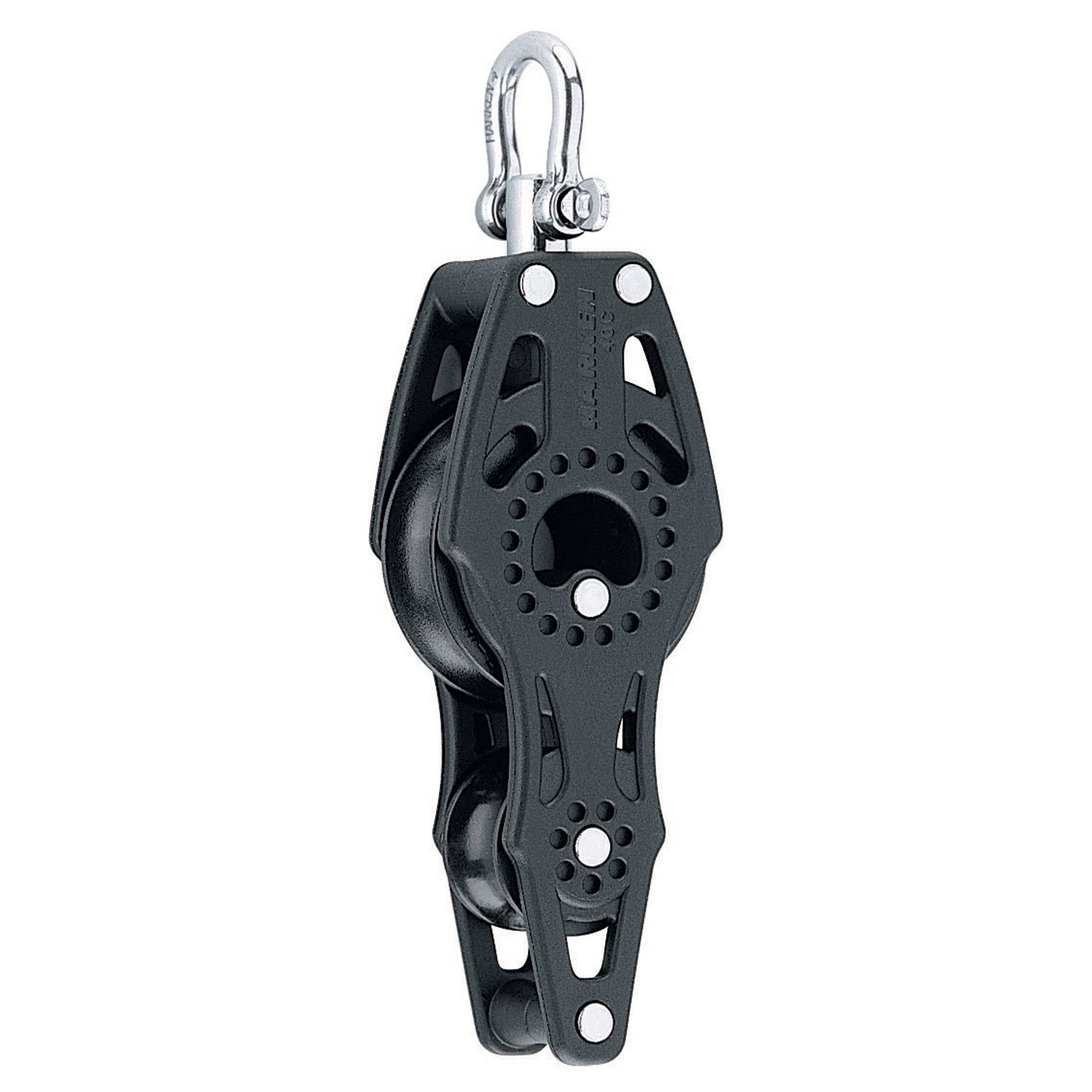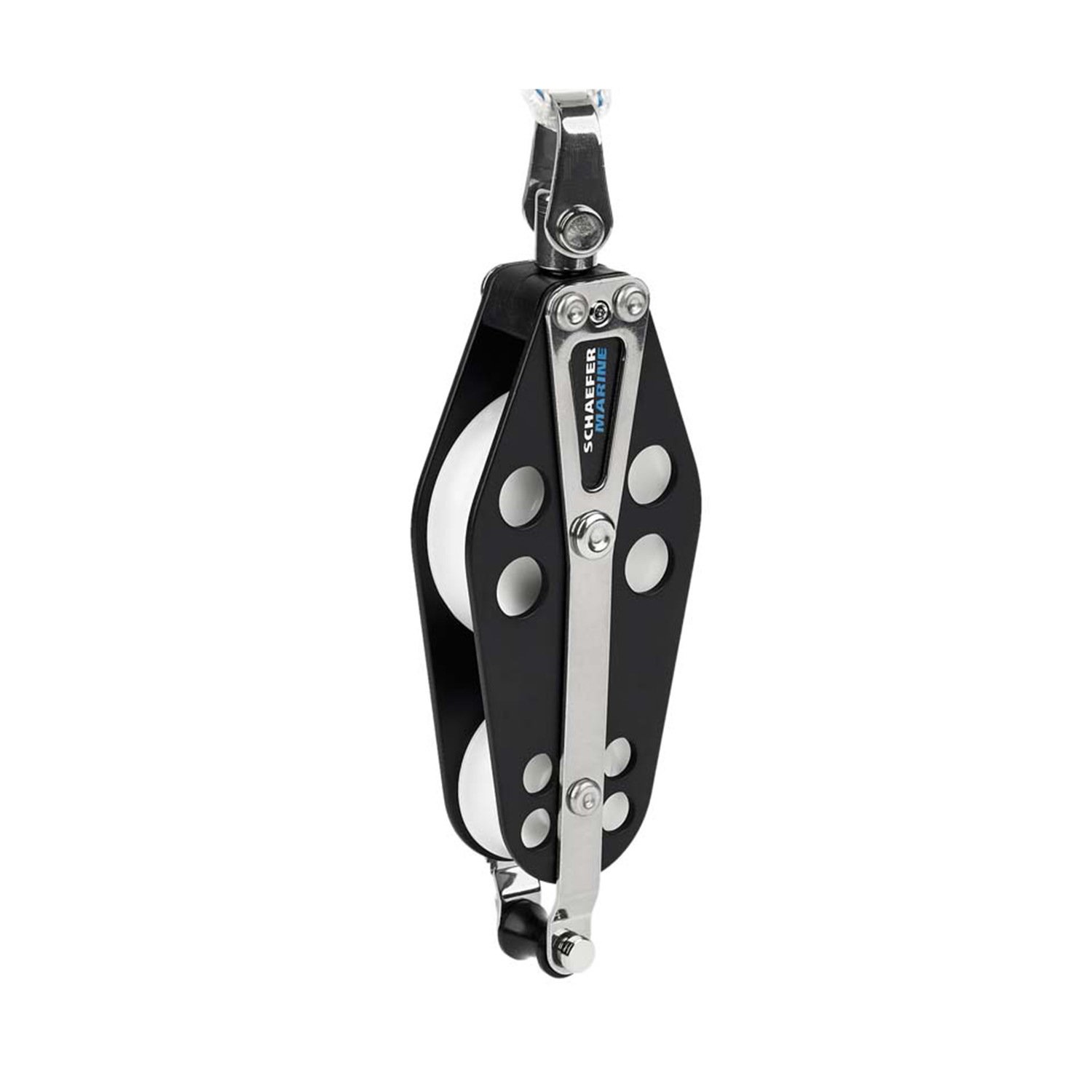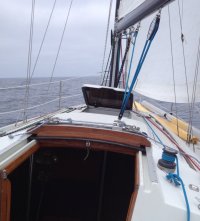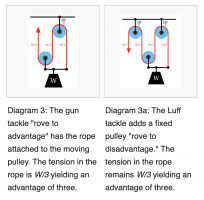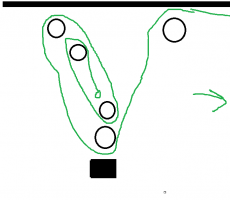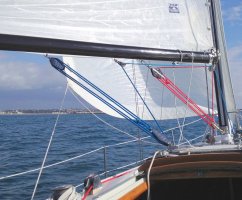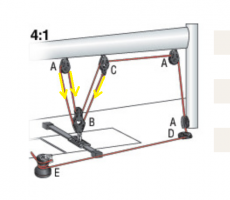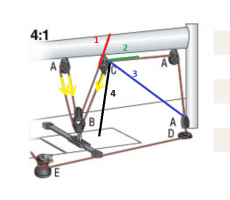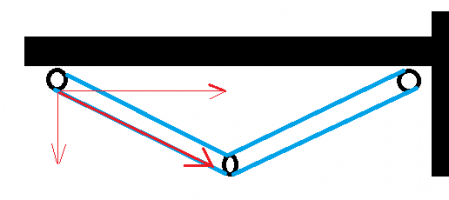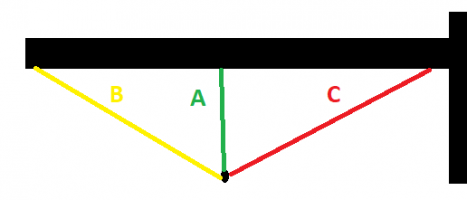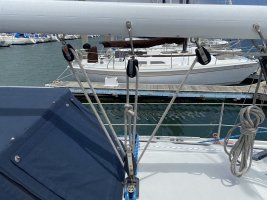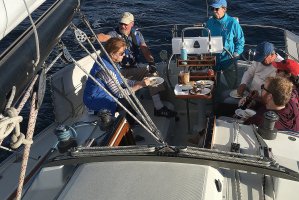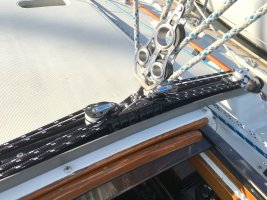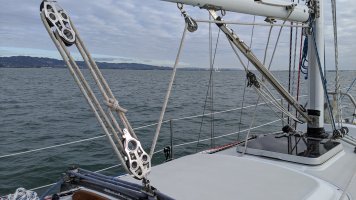My 1985 Ericson 32-3 has a 3:1 mainsheet which runs under the boom and down/back through the deck organizer to a winch on the starboard cabintop -- pretty standard I think.
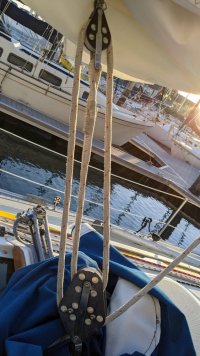
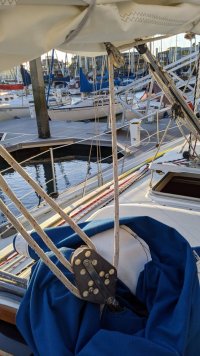
I'm interested in converting this into a 4:1 or 5:1. Thanks to @gfilipi, who directed me to Harken's mainsheet system site, I have a clear picture of what a 4:1 would look like. I can actually accomplish this without buying anything new and just swapping the aft block w/becket and the next-forward block under the boom.
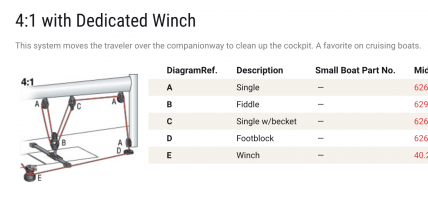
I'm curious if anyone's attempted a 5:1 on this boat? There are only two block lugs under the boom in effective positions for the mainsheet instead of the three depicted on Harken's site -- makes sense as it's not boat specific. I was thinking of using another fiddle block instead of the aft two singles pictured below. Or even use two side-by-side double blocks.
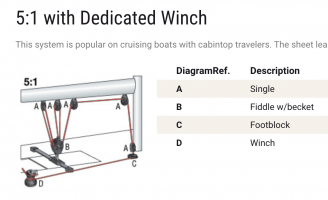
And, heck, why stop there? I could achieve a 6:1 or better using triples. Any science? or rules of thumb around sheeting systems to think about?
For reference, here's a thread I found that shows the E32-3 4:1
 ericsonyachts.org
ericsonyachts.org


I'm interested in converting this into a 4:1 or 5:1. Thanks to @gfilipi, who directed me to Harken's mainsheet system site, I have a clear picture of what a 4:1 would look like. I can actually accomplish this without buying anything new and just swapping the aft block w/becket and the next-forward block under the boom.

I'm curious if anyone's attempted a 5:1 on this boat? There are only two block lugs under the boom in effective positions for the mainsheet instead of the three depicted on Harken's site -- makes sense as it's not boat specific. I was thinking of using another fiddle block instead of the aft two singles pictured below. Or even use two side-by-side double blocks.

And, heck, why stop there? I could achieve a 6:1 or better using triples. Any science? or rules of thumb around sheeting systems to think about?
For reference, here's a thread I found that shows the E32-3 4:1
E-38 Main Sheet
Hello All, Looking for some advice. My main sheet gear on my 1982 E-38 is worn out and I'm looking to replace it. I have looked a Garhauer equipment. Any pro's and con's? The fellow I spoke to at Garhauer recomended I replace the fiddle block attached to the traveller with a triple block...
Last edited:


